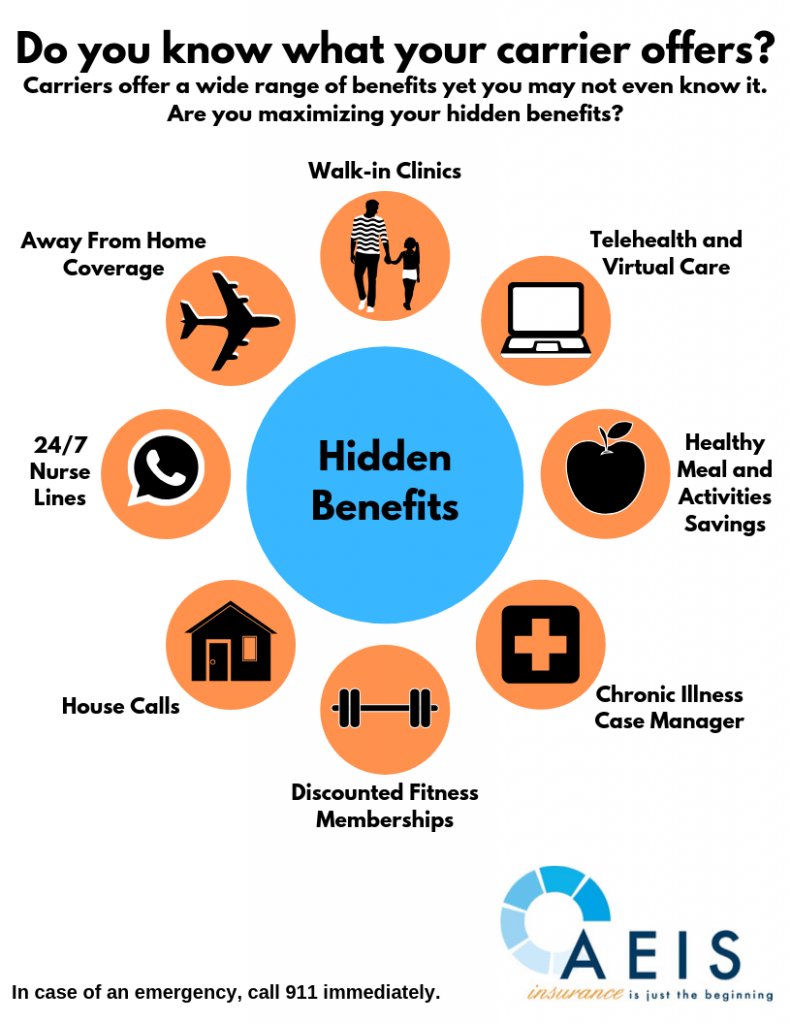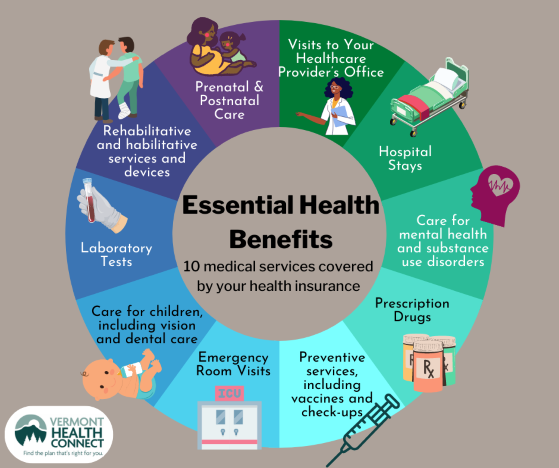Not known Details About Medicare Advantage Agent
Not known Details About Medicare Advantage Agent
Blog Article
Medicare Advantage Agent Fundamentals Explained
Table of ContentsHow Medicare Advantage Agent can Save You Time, Stress, and Money.Some Known Facts About Medicare Advantage Agent.Not known Details About Medicare Advantage Agent

complies with from confusing the reasonably young age account of the without insurance with the far better health and wellness, on average, of more youthful persons. This covers the link in between health and wellness status and health and wellness insurance coverage. For those without access to work environment health and wellness insurance policy, poor health is a possible barrier to buying nongroup protection since such insurance coverage might be very valued, leave out pre-existing problems, or be simply not available. The number of without insurance Americans is not especially large and has not changed in the last few years. 7 out of ten participants in a nationally depictive survey assumed that less Americans did not have medical insurance than really do(Fronstin, 1998). Approximately fifty percent(47 percent )believed that the number of people without medical insurance reduced or remained constant over the last fifty percent of the last years(Blendon et al., 1999). This drop of nearly 2 million in the number of individuals 'without insurance coverage (a decrease
of around 4 percent)is absolutely a favorable adjustment. With a softer economic climate in 2000 the current reported gains in insurance policy coverage may not proceed(Fronstin, 2001 ). The decline in the number of without insurance will certainly not proceed if the economy remains sluggish and healthcare expenses remain to exceed rising cost of living. This is because the information were accumulated for a period of strong economic efficiency. Of the approximated 42 million people that were uninsured, just about about 420,000(about 1 percent)were under 65 years of age, the age at which most Americans end up being eligible for Medicare; 32 million were grownups in between ages 18 and 65, around 19 percent of all adults in this age group; and 10 million were children under 18 years of age, regarding 13.9 percent of all youngsters (Mills, 2000). These quotes of the variety of individuals uninsured are created from the yearly March Supplement to the Present Population Study (CPS), carried out by the Demographics Bureau. Unless or else noted, national estimates of individuals without health and wellness insurance and percentages of the population with different sort of coverage are based upon the CPS, one of the most commonly utilized resource of quotes of insurance coverage and uninsurance rates. These surveys and the estimates they generate are described briefly in Table B. 1 in Appendix B - Medicare Advantage Agent. These studies differ in dimension and sampling methods, the questions that are asked concerning insurance policy
More About Medicare Advantage Agent
protection, and the time duration over which insurance protection or uninsurance is determined(Lewis et al., 1998, Fronstin, 2000a ). Still, the CPS is especially useful since it produces annual quotes reasonably swiftly, reporting the previous year's insurance protection approximates each September, and because it is the basis for a consistent set of estimates for more than twenty years, permitting analysis of fads in coverage in time.

Excitement About Medicare Advantage Agent
Over a three-year period beginning early in 1993, 72 million individuals, 29 percent of the united state population, were without insurance coverage for a minimum of one month. Within a single year(1994), 53 million individuals experienced a minimum of a month without protection(Bennefield, 1998a). Six out of every ten uninsured grownups are themselves used. Although working does improve the chance that a person and one's member of the family will have insurance coverage, it is not a guarantee. Even participants of families with 2 full-time wage earners have practically a one-in-ten chance of being without insurance (9.1 percent uninsured rate)(Hoffman and Pohl, 2000 ). The relationship between health and wellness insurance coverage and access to care is well established, as recorded later in this chapter. The partnership in between health insurance coverage and health and wellness results is neither straight neither easy, a substantial medical and health and wellness services study literary works links health insurance coverage
to improved enhanced to care, better qualityHigh quality and improved enhanced individual population populace statusStanding As an example, the second record, on personal wellness results for without insurance grownups, is represented by the inner circle of the number, while the third record, on household health, encompasses the subjects of the 2nd record yet emphasizes a various device of analysis, specifically, the family members. The 6th record in the series will certainly present info about approaches and campaigns embarked on in your area, statewide, or nationally to deal with the absence of insurance and its unfavorable effects. Degrees of evaluation for checking out the results of uninsurance. This conversation of medical insurance protection concentrates primarily on the U.S. populace under age 65 due to the fact that basically all Americans 65 and older have Medicare or various other public protection.
It concentrates particularly on those without any type of wellness insurance policy for any size of time. The issues encountered by the underinsured are in some aspects comparable to those faced by the uninsured, although they are normally much less extreme. Uninsurance and underinsurance, nevertheless, involve distinctly different policy problems, and the techniques for addressing them might vary. Throughout this study and the 5 reports to adhere to, the major focus gets on individuals with no medical insurance and hence no help in spending for wellness care beyond what is offered through charity and safeguard institutions. Wellness insurance policy is an effective element influencing receipt of care because both patients and physicians reply to the out-of-pocket price of solutions. Wellness insurance, however, is neither essential nor sufficient to access to clinical services. However, the independent and direct impact of wellness
insurance policy protection on accessibility to health and wellness solutions is well developed. Others will obtain the healthcare they need also without health and wellness insurance policy, by paying for it out of pocket or seeking it from service providers who offer care free or at extremely subsidized rates. For still others, medical insurance alone does not make certain invoice of care due to the fact that of various other nonfinancial obstacles, such as an absence of health care carriers in their area, limited accessibility to transportation, illiteracy, or linguistic and cultural distinctions. Formal research see it here study about without insurance populations in the United States dates to the late 1920s and very early 1930s when the Committee on the Expense of Treatment produced a collection of records concerning financing doctor office gos to and hospital stays. This problem ended up being prominent as the varieties of medically indigent climbed throughout the Great Depression. Empirical studies constantly sustain the link in between access to care and enhanced health end results(Bindman et al., 1995; Starfield, 1995 ). Having a routine resource of care can be thought about a predictor of gain access to, rather than a straight step of it, when health outcomes are themselves made use of as access indicators. This expansion of the notion of gain access to dimension was made by the IOM Committee check my reference on Monitoring Gain Access To to Personal Health Care Provider(Millman, 1993, p. Whether moms and dads are guaranteed shows up to affect whether or not their children get care as well as how much careeven if the children themselves have coverage(Hanson, 1998). The wellness of parents can influence their capability to take care of their kids and the degree of family members anxiety. Fretting about their youngsters's access to care is itself a resource of stress and anxiety for parents. 3 phases follow in this report. Chapter 2 offers an introduction of just how employment-based medical insurance, public programs and individual insurance policy policies run and communicate to offer substantial however incomplete insurance coverage of the united state populace. This consists of a review of historical patterns and public laws affecting both public and personal insurance policy, a discussion of the interactions among the different kinds of insurance, and an evaluation of why individuals relocate from one program to an additional or finish up

Report this page